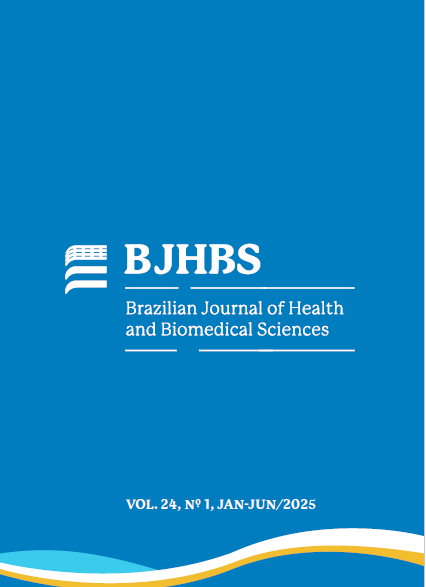Analysis of the occurrence of the mesiobuccal canal in maxillary first molars using cone-beam computed tomography in a Brazilian population
DOI:
https://doi.org/10.12957/bjhbs.2025.93429Resumo
Introduction: Although the success rate of endodontic treatment in molars can reach up to 91.7%, failures may occur due to the anatomical complexity of the canals and the presence of undetected canals, with the second mesiobuccal canal being the most frequently overlooked. Objectives: To assess the morphology of the first upper molar and the incidence of the second mesiobuccal
canal using cone-beam computed tomography. Materials and Methods: Retrospective secondary data were collected from patients at a reference radiology clinic in Maringá, Paraná, and then underwent imaging exams with the Prexion 3D tomography machine between December 2015 and May 2016. Results: A total of 174 patients and 221 first upper molars were analyzed, with a higher prevalence of three roots (93%) and the presence of the second mesiobuccal canal in 57.4% of the teeth. The most frequent Vertucci
classification was Type IV (38%). Conclusion: The study concluded that the first upper molar tends to have three roots and that the second mesiobuccal canal is present in more than half of the studied population, while the most common classification for this canal was Type IV.
Downloads
Downloads
Publicado
Como Citar
Edição
Seção
Licença
Copyright (c) 2025 Brazilian Journal of Health and Biomedical Sciences

Este trabalho está licenciado sob uma licença Creative Commons Attribution-NonCommercial 4.0 International License.
Termo de transferência de direitos autorais/conflitos de interesses: após o aceite final do artigo para publicação, os autores deverão enviar o termo de transferência dos direitos assinados pelo autor principal representando cada um dos autores. Neste termo deverão ser declarados quaisquer conflitos de interesses.
